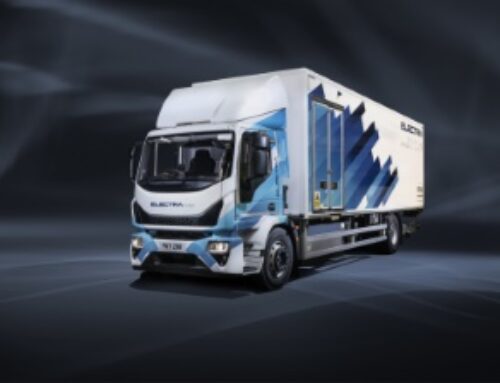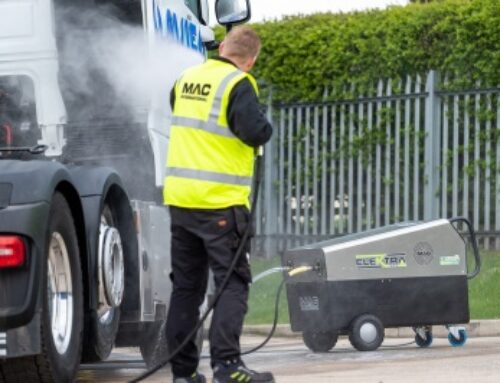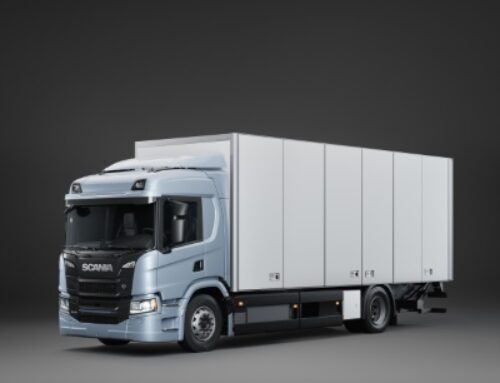Weighbridge maintenance tips from Weightron
 Emlyn Roberts, sales director at industrial weighing specialist Weightron Bilanciai, discusses some of the main issues to consider surrounding weighbridges and their upkeep, to ensure precision of readings
Emlyn Roberts, sales director at industrial weighing specialist Weightron Bilanciai, discusses some of the main issues to consider surrounding weighbridges and their upkeep, to ensure precision of readings
Trade approved weighbridges play a vital role in all aspects of road transportation and logistics. Maintaining the ongoing performance and reliability of these robust, yet sensitive, measuring instruments is essential for both fiscal and legislative purposes.
Operators have a legal responsibility to ensure their weighbridges continue to meet accuracy criteria as laid down by weights and measures regulations, whilst any breakdowns are expensive and operationally disruptive. If any critical components such as load cells or instrumentation are replaced in legal-for-trade weighbridges, operators have a legal obligation to have the weighbridge re-verified by a competent company authorised to carry out such work, adding to the cost of the breakdown.
Inaccurate weighbridges can present three separate problems, all of which impact on profitability. Firstly, any non-conformity issues can lead to weighbridges being taken out of service by local authority inspectors.
Secondly, inaccurate weighing can result in loss of revenue through either giving away too much product, which is not charged for, or under-delivering, which can lead to customer dissatisfaction. Finally, inaccurate weighing can lead to vehicles being inadvertently overloaded, putting operators at risk of heavy fines.
 The most cost-effective way to ensure ongoing reliability and legal compliance is for operators to cover their weighbridges with a comprehensive maintenance contract, either implemented by the manufacturer or by a recognised and qualified weighbridge service company. This means weighbridges are regularly serviced and checked for accuracy.
The most cost-effective way to ensure ongoing reliability and legal compliance is for operators to cover their weighbridges with a comprehensive maintenance contract, either implemented by the manufacturer or by a recognised and qualified weighbridge service company. This means weighbridges are regularly serviced and checked for accuracy.
However, it is still important that the operational procedures for weighbridges are clearly managed and controlled. In parallel, an ongoing preventative maintenance plan should be implemented, to further minimise any risk of breakdown.
Weighbridges can be adversely affected by drivers driving on or off weighbridges too fast and using excessive braking. This can be controlled through the use of speed restriction signs or the introduction of control barriers and traffic lights. Approach roads should be kept clean and well maintained. If on-off ramps are part of the design (surface-mounted weighbridges), the integrity of these should be regularly checked.
It is advisable to carry out regular visual inspections of the weighbridge deck to ensure there is no build-up of debris, mud or dirt. This should be carried out at least once per week, and may require more frequent inspections during winter months. Simple regular cleaning and sweeping will normally remedy any build-ups. Chemicals should not be used to clean the deck.
Care must be taken when removing ice and snow in winter and the use of road salt on the decks should be avoided. Also note that snow and ice build-up on the weighbridge can affect weighing accuracy. Regular hosing (not pressure hosing) of the decks in winter will remove any salt deposited by vehicles.
 For pit-mounted weighbridges, the civil engineering foundation design should incorporate adequate drainage so that water drains away freely. However, if drains are allowed to become blocked, water and debris can build up around the load cells. More frequent checks should be carried out during periods of heavy storms.
For pit-mounted weighbridges, the civil engineering foundation design should incorporate adequate drainage so that water drains away freely. However, if drains are allowed to become blocked, water and debris can build up around the load cells. More frequent checks should be carried out during periods of heavy storms.
If weighbridges do become flooded, they must be checked by a qualified engineer as soon as possible, even if the weighbridge appears to perform normally after the flooding has subsided. Pit weighbridge designs often incorporate ‘T’ section rubber fitted in the gap between the weighbridge deck and the side of the foundations. It is important for both operational and safety reasons that this is not removed or disturbed.
One simple test for checking the weighbridge is to stand on different parts of the deck and check the weight reading. This should show similar results within the working tolerance of the weighbridge. Any major discrepancies should be reported.
It should be noted that all relevant health and safety procedures, in line with site protocol, must be adhered to when any checks are being carried out on and around the weighbridge area. Most instrumentation and control equipment is powered by mains electricity so appropriate measures must be taken to isolate power supplies.
Another important caveat is that electric welding must not be carried out on weighbridges without taking the correct precautions and advice. Load cells and instrumentation can easily be damaged by the high electrical currents involved.
Finally, if weighbridges are to be taken out of service for any length of time, advice should be sought to ensure correct storage of critical components.











